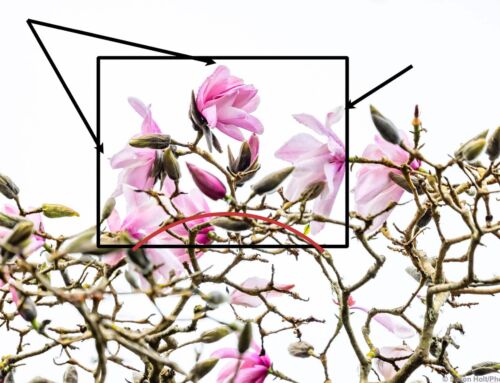I guess this photo tip has nothing to do with photographing plants or gardens, but so many people seemed surprised I was able to capture the full solar eclipse without any special filters. So, I offer today’s tip.

Total Solar Eclipse with diamond ring effect from Ola, Idaho Community Center
And now that the eclipse is over, it will be nine more years until anyone in the United States can use this photo tip. But I had so much fun going to Idaho and getting the picture I imagined, I will share the secret as an excuse to share the picture on PhotoBotanic.
Most importantly was finding a location where the skies would be clear and I would have a long duration of total eclipse. Fortunately I have a brother-in-law in Boise, Idaho who helped me find the tiny town of Ola, on the Sweet-Ola Highway where there were no events planned and nothing on Google to attract attention.

Viewing total eclipse at Community Center in Ola, Idaho
Though I was amazed to meet a German tourist who it planned this location two years ago based on duration of totality (two minutes and 5 five seconds) and the probability of clear skies.
For the total eclipse photograph no filter was required, and no eclipse glasses needed when it was total. At that point the only light is from the Sun’s corona.
Before totality, if I had tried to capture the crescent shape of the Sun as the moon moved in front of it, the camera would have needed a filter, a massive neutral density filter, just as the eyes needed those very dark eclipse glasses. But in total eclipse I just needed to have the camera on a tripod and to make a manual exposure setting that allowed some highlight detail – a calculation quickly made by viewing the first few exposures looking for the highlight alerts my camera provides.

iPhone photo of eclipse location just prior to totality and dslr camera wide view
I had more than two minutes to work and took the first photograph with my wide-angle lens (above) in order to show the setting, and then quickly put on a 200 mm lens that was perfect for allowing the Diamond ring effect to create the starburst while I focused on infinity.
The starburst is purely an optical creation of the lens right at that specific point where the “diamond”, the first bulging appearance of the sun, comes through. At that exact point I clicked off eight exposures in 34 seconds before the light became too bright as the sun re-emerged.
Like so many of the best photographs being in the right place at the right time is the best tip. And it does help to have the right camera on a tripod.
A truly fantastic video on Vimeo!







Leave A Comment